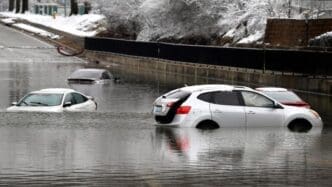Analyzing the likelihood of snowfall on Christmas Day reveals significant historical trends across the lower 48 states of the United States. The probability of a white Christmas, defined as having at least one inch of snow on the ground, varies greatly depending on geographical location.
The pursuit of a white Christmas is a cherished aspiration for many Americans; however, the likelihood is highly dependent on where one resides. Statistical analysis shows that northern states have a higher probability due to their colder climates. For instance, areas like Minnesota and upstate New York consistently report snow on December 25th.
Conversely, states in the southern regions, including Florida and Texas, experience significantly lower chances. Meteorological data indicates that these areas rarely meet the criteria for a white Christmas, mainly due to warmer temperatures that prevent snow accumulation.
The Rocky Mountains create a unique weather pattern, giving certain areas a moderate chance. Despite this, snow cover on Christmas Day remains unpredictable due to varying weather conditions leading up to the holiday.
Examining trends over recent decades illustrates how climate patterns affect snow likelihood. There seems to be a noticeable decrease in regions traditionally expecting snow, pointing to broader climatic shifts impacting snowfall patterns in winter months.
Social media and broadcast media often highlight these weather statistics as part of holiday forecasting, providing residents with insights into their chances for a snowy celebration. These platforms continue to evolve in delivering historical climate data to engage public interest.
The historical data on white Christmas probabilities highlights how geographic and climatic factors contribute to snowfall trends across the United States. While certain areas consistently enjoy snowy landscapes during the holiday, others rarely do. Understanding these patterns helps manage expectations and underscores the impact of broader climate changes on festive weather traditions.
Source: Weather








